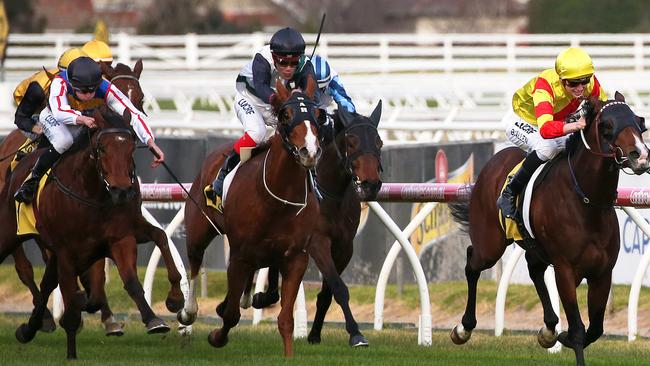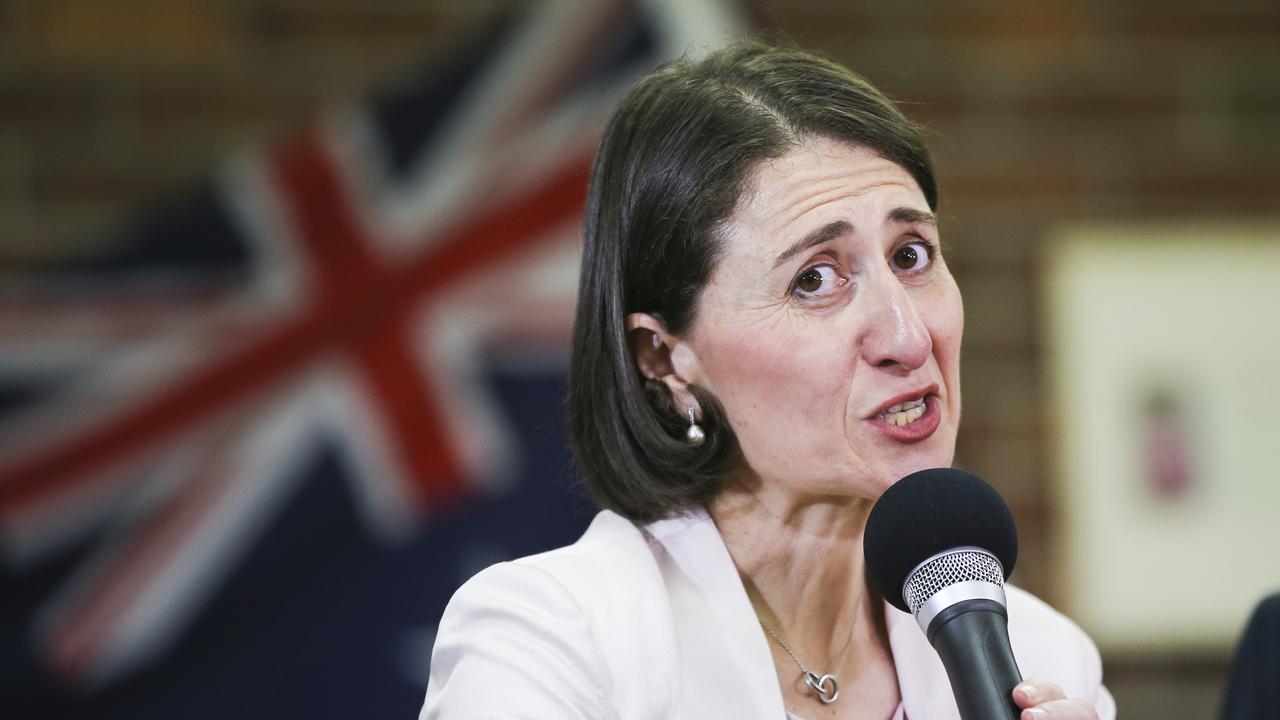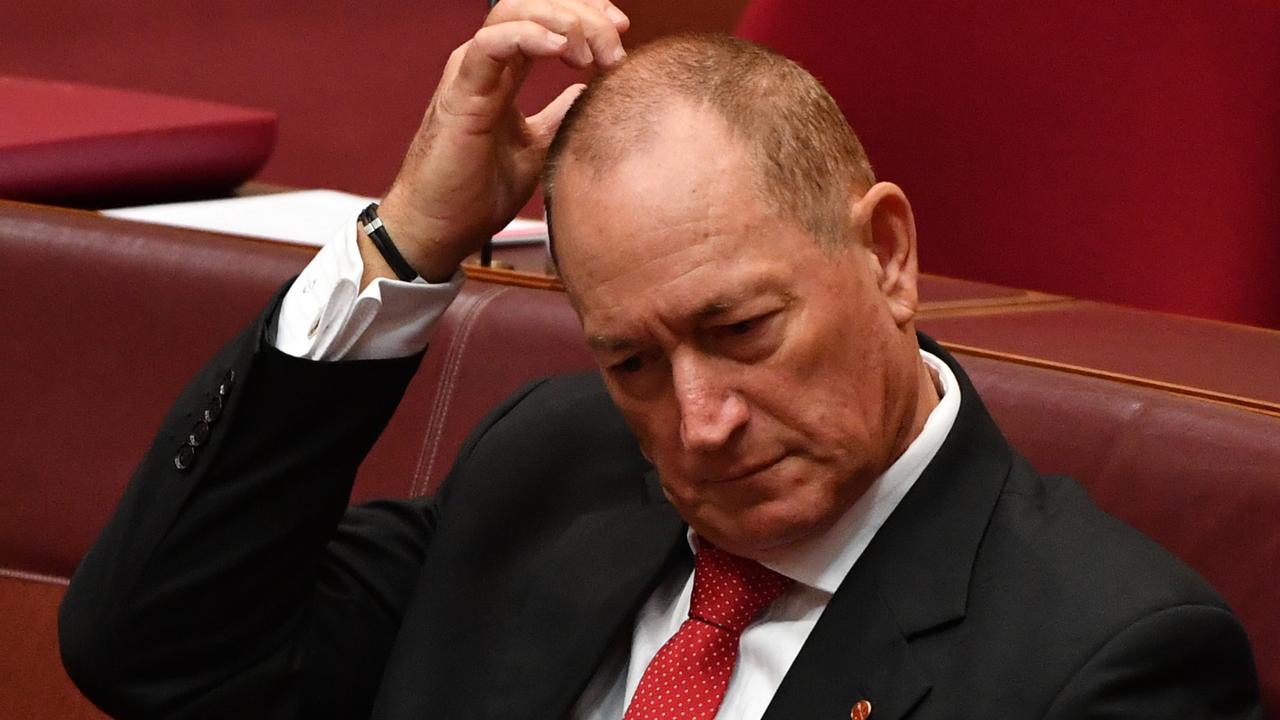
Firstly, happy birthday to all the racehorses out there reading this column. May your paddocks be verdant and lush, your victories many and the indignities you endure too few to mention.
These are grim times for thoroughbred racing in Australia. Sponsors are disappearing, racing’s slice of gaming revenues is shrinking and ugly attempts at cheating have become more complex and clandestine.
There is, of course, a rich history of, shall we say, colourful comings and goings in the industry.
The first among equals of Australia’s colourful racing identities, George Freeman, almost single-handedly destroyed the integrity of harness racing in the space of a decade. Freeman’s modus operandi often involved corrupting riders to fix races. He’d bet $50 on behalf of all the riders in a race to ensure not just the winner saluted at the ledger but the place-getters hit the line in prearranged order. If the winner paid $8, each rider in the race would receive $400 for their trouble.
It was an easy scam. The riders could hardly be expected to refuse Freeman’s requests. He had a reputation as a violent gunman and if he didn’t pull the trigger, there were plenty of others on the payroll who would. Not many said no to George Freeman and lived to tell the tale.
Eventually the penny dropped and run-of-the-mill punters took off with the alacrity and sense of purpose of those suffering a bad case of the trots.
It was said that Griffith-based drug baron, ‘Aussie Bob’ Trimbole was rigging a race a day. Trimbole won a reported $1.5 million at one race meet at Rosehill in 1981. To say that was a spot of good fortune is naivety at its most callow. Like Freeman, Trimbole often enlisted jockeys to do his dirty work.
George Brown was a Wollongong based trainer. Like so many in the business, he was an honest type. His charred remains were found in his incinerated car on top of Bulli Pass in April 1984. He’d been tortured, his legs and arms broken. His murder remains unsolved but one strong theory is that Brown was approached by Sydney gangsters to ring-in one better performed horse for another. He refused and it cost him his life.
The story of the Brown murder was a prequel to what is said to be one of racing’s darkest days, the Fine Cotton ring-in at Eagle Farm, Brisbane in August 1984. The switch between the then nine-year-old picnic meet nag, Fine Cotton and the ringer, a Group Two winner, Bold Personality, was a comedy of errors. The high farce involved two dozen packets of women’s hair dye and a conspiracy so bizarre and unlikely that those involved understood they would almost certainly end up in prison. The trainer, Hayden Haitana, claimed he was met by a Sydney crook and told if he didn’t go through with the ring-in, he’d end up like George Brown.
Those episodes remain in the deep past. Horse racing and money remain deeply entwined and wherever money or more importantly the prospect of easy money is to be found, criminal behaviour is never far away. The industry today faces the same challenges as those in Freeman’s day but there is vast wealth at stake now and perpetrators are far more furtive and well organised.
In May this year, leading trainer Robert Smerdon was banned from racetracks for life by Racing Victoria for “systematically doping” over 100 horses over a seven-year period. Smerdon trained multiple Group One winners and there is evidence two of his runners were doped before unsuccessful Melbourne Cup runs.
Smerdon and other banned trainers adopted the illegal practice of giving their runners a “milkshake” or “top-up”. Horses were administered bicarbonate of soda via nasogastric tube before a race to increase stamina by reducing lactic acid in muscles.
As a result, every one of Smerdon’s wins over the last decade needs to be called into question. The damage to the sport’s reputation is incalculable. Racing has been hit where it hurts most — in its most prestigious and most watched event — the Melbourne Spring carnival where Smerdon’s horses year in-year out consistently outperformed on the track without evoking any apparent curiosity from the stewards.
As in human sporting endeavours, in horse racing the alchemists are generally a step ahead of the chemists. In a sense there is no stopping doping, but racetrack bans are insufficient. Criminal charges and long spells in prison need to act as a strong deterrent.
Money drives racing into other dark places indirectly. There is chronic overbreeding in the sport and dismally weak attempts at regulation. This leads to what the industry euphemistically calls ‘wastage’.
There are an estimated 13,000 thoroughbred foals born every year. Of that number 2,000 of them will never race. Racing officials have no idea what happens to them, but we can safely assume that all are not adopted as pets by doting teenage girls.
Every year about 8,500 horses leave racing and we have virtually no idea what becomes of them either. Many end up as pet food or are exported to Europe for human consumption. We could call them the lucky ones. At least they are humanely dispatched.
Still, the maths doesn’t add up and it would be no surprise to discover mass equine graves in secret locations around the country. You can almost bet on it.
The use of the whip is another source of aggravation. There is no doubt it turns people off the sport. The rules governing the use of the whip in the past were downright awful. They’re better now but not so long back, I spoke with a multiple Group One-winning jockey who had made the mistake of speaking with the owners of a battling nag prior to a race at a country meeting. They gave him their tale of woe. They were running out of dough. This was their last chance. The jockey promised he would do what he could. He rode the horse to a win but he flogged it so hard and so often, he thought it would never race again. If the stewards noticed, they took no action. It was just another day at the races.
“Never listen to owners,” he told me ruefully.
If you believe jockeys are the root cause of the problem I’d ask you to consider clambering on top of 1000 pounds of jittery animal set to run at top speed among a dozen or so 1000-pound jittery animals doing the same while sitting on a saddle not much thicker than a cigarette paper and see how you get on. It is one of the most dangerous jobs in sport.
Personally, I believe the rules as they stand on the use of the persuader are more or less appropriate if policed properly, but I know my view is a long way from public perception. The racing industry is going to have to deal with this and if that means the persuader is banned and jockeys ride hands and heels just to keep the sport alive, then so be it.
Bear in mind, the push to ban greyhound racing almost found expression in black letter law in New South Wales under then premier Mike Baird. Make no mistake, the animal rights’ lobby will not be satisfied if the dishlickers go. The thoroughbred industry is their next mark and if they succeed there won’t be many race horses having happy birthdays.



